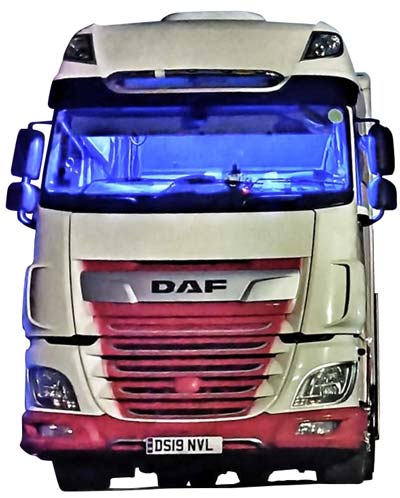Top 10 Tips For Choosing The Right Vehicle And Capacity For Shuttle Service To Employees
Here are 10 helpful tips for selecting the right vehicle and the right capacity for your employee shuttle service:
1. Assess the needs of employees for transportation
Start by conducting a thorough analysis of your employee base in order to figure out the amount of employees that will use the shuttle service on a regular basis. Consider factors such as the employee base, shifts during work and peak times for usage. Use this data to determine the most suitable car size and number of shuttles needed to allow for the number of passengers.
2. Select the appropriate vehicle type
Choose a vehicle that is best to serve your shuttle needs depending on the amount of staff and particular requirements. Minibuses are available, as well vans or larger buses. Minibuses and vans are ideal for smaller groups since they are easy to maneuver within tight areas. However, larger buses are suitable for greater capacity needs. The design of the vehicle is crucial. It should provide an area for comfortable seating for employees who travel with equipment or bags.
3. Evaluate Fuel Efficiency
The price of fuel could be a significant factor in the budgeting for shuttle services. To minimize operating costs, choose vehicles that use less fuel. Think about hybrid and electric vehicles too, since they are more environmentally friendly and can save you money in the long run. Analyzing fuel efficiency will allow you to make a more informed choice, while balancing capacity and cost effectiveness.
4. Take into consideration Accessibility Features
Check that the vehicles chosen for employees with disabilities meet accessibility requirements. This could include features such as lifts for wheelchairs, low-floors for easy accessibility, and seating areas specifically for people with mobility challenges. This is not just in line with legal requirements, it also creates a comfortable workplace.
5. Plan for Growth with Flexibility
As organizations evolve and grow, so do the size of their employees. Take into consideration the possibility of growth to come when selecting a vehicle. The flexibility of vehicles that have adjustable seating arrangements or the capability to expand their capacity makes it possible the business to easily adapt to shifts in the number of employees.
6. Find out about safety ratings and features
When you think about employee transportation, safety is of paramount importance. Make sure you research the vehicle's safety rating and specifications before purchasing it. Look for vehicles that are equipped with the most recent safety technologies such as anti-lock breaks as well as stability control and collision avoidance. Also, ensure that all safety regulations are adhered to by the vehicle, to ensure the safety of employees while traveling.
7. Examine reliability and maintenance
Pick vehicles that are low maintenance and are trustworthy. If your vehicle is always in need of repairs can result in shuttle interruptions and unhappiness among employees. You can also create a maintenance program to ensure that vehicles are in good conditions and extend their lifespan.
8. GPS and Fleet Management Software
The implementation of GPS tracking and fleet management software can improve the effectiveness of your shuttle service. These software tools permit real-time monitoring of the location of vehicles and optimise routes in accordance with traffic conditions, employee schedules and employee schedules. Furthermore, software for managing fleets can help to monitor the performance of vehicles, fuel usage, and maintenance requirements, which will ensure that vehicles are used efficiently.
9. Implementing Feedback Mechanisms for Employees
Encourage your employees to give feedback about the comfort of their vehicle and its capacity through surveys or suggestion boxes. The feedback from employees can help you pinpoint any problems with seating comfort or accessibility. Reviewing this feedback regularly will allow for needed adjustments to the vehicle selection and service adjustments.
10. Total Cost of Ownership: How to budget?
When choosing a car, you should take into consideration the total cost of ownership (TCO) which includes costs for purchase, fuel, insurance maintenance and depreciation. TCO analyses help to make informed decisions which balance the initial costs of investment with the long-term operating expenses. The company can select the right vehicle to meet budgetary constraints while ensuring stability and capacity by looking at all costs.
If they follow these suggestions, companies can select appropriate vehicles, control capacity, and offer a safe, efficient and comfortable experience for their employees. Read the recommended basics about employee shuttle for website recommendations including pick up service airport, access transport, private transportation services, luxury transportation services, miami transportation services, miami airport shuttles, luxury transportation, airport transfer services, airporter bus, car services lax airport and more.

Ten Top Tips To Help You Choose The Right Vehicle For Your Event's Transportation Service.
Here are 10 excellent tips for selecting the right vehicle type and capacity for transporting your event.
1. Evaluate Event Attendance Estimates
To begin, estimate the number of people who attended the corporate event. You can estimate this using registration information, RSVPs or attendance records. Understanding the number of expected participants can help you better plan your car options and figure out the capacity that is required for transportation.
2. The Right Vehicle Types
The type of vehicle you select will be based on the expected attendees and the type of event. Shuttles and buses with multiple seats are ideal for large parties. Vans and luxury sedans can be suitable for smaller groups or VIP guests. The availability of a variety of vehicle types ensures everyone will be transported in comfort.
3. Consider Accessibility Needs
Make sure you choose a vehicle which are accessible to everyone and includes people with disabilities. This includes choosing cars with wheelchair lifts, or those with low-entry. It is crucial to be inclusive when it comes to transportation. This is not only a matter of adhering to regulations however it also makes the trip more enjoyable for everyone.
4. Create multiple pick-up locations
To ease transportation Consider multiple pick-up locations if your attendees come from various places. These could be central locations like airports, hotels, or public transportation hubs. By allowing different pickup locations, you can maximize attendance and minimize logistical issues.
5. Booking System Implementation
You should think about implementing a system of reservations for transportation services. Participants can reserve their seats ahead of time. This helps to ensure that vehicles are fully stocked and minimizes the possibility of overcrowding. Reservation systems assist in adjusting capacity according to actual demand.
6. Choose the most effective routes
Find the best routes to ensure you get to and from your event in time. Examine traffic patterns to identify the most efficient routes for cars. By using route optimization software you can determine the most efficient routes, and decrease the time it takes to travel. This will enhance your overall experience.
7. On-Demand Transportation Services
If you are planning a large event, you may want to offer shuttle services to attendees who are able to book their transportation whenever they like. This is particularly beneficial for events with different schedules or days. On-demand services can be flexible and offer attendees transportation when they need it.
8. Monitor the utilization of vehicle capacity
Keep track during the event of capacity for the vehicle. By observing the number of seats that have been filled, it's possible to make quick changes. Analyzing data on capacity post-event can be useful to plan for the future of transportation.
9. Communicate Transportation Details Clearly
Make clear the transportation requirements to attendees well in advance of the event. You can provide information on pickup locations and schedules as well as vehicle types. Utilizing multiple communications channels, including email, event apps or printed materials, you can ensure that everyone is aware of their transportation options.
10. Gather feedback for future improvements
Following the event, you can solicit feedback from attendees about their experiences with transportation. It could include things such as the comfort of the vehicle, timeliness, and overall satisfaction. When you analyze this feedback, you can gain valuable insights into what was successful and what can be improved for future corporate functions.
These suggestions help organizations organize their event and select the most appropriate vehicles, which will provide a smooth and enjoyable experience for all attendees. Planning and executing the event properly can improve the overall outcome and build an image that is positive for the organization. Follow the best event transportation service for site info including services and logistics, globe transport, global transport, reliable transportation, vehicle transport service, service transportation company, globe transport, luxus transportation, transportation management system, transport planning and more.

Comments on “20 Top Facts For Picking Employee Transportation Sites”